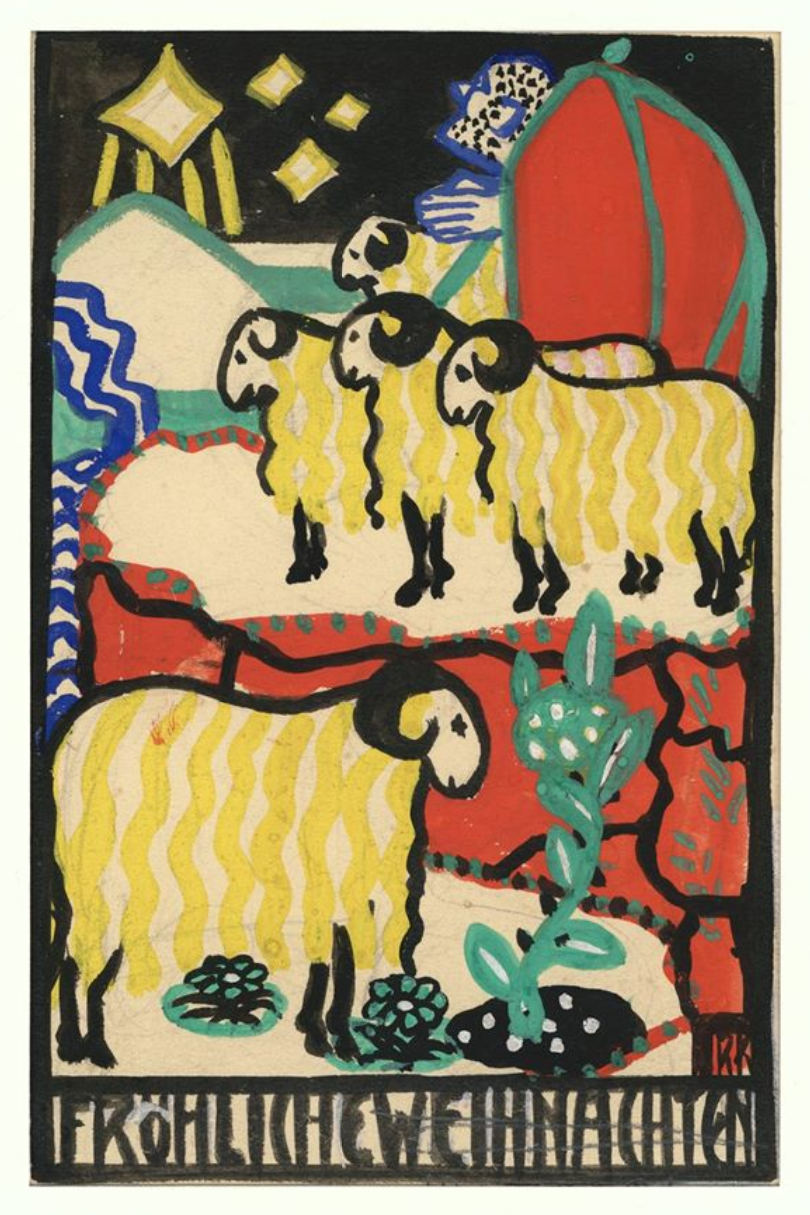WIENER WERKSTÄTTE CHRISTMAS CARDS
I wrote about the textiles of the Wiener Werkstätte in a previous post, but given the season I thought it fitting to look at their archive of uniquely striking Christmas cards, many of which are held in the MAK (Museum of Applied Arts) collections in Vienna. I think you’ll agree it would be hard to part with these cards if one dropped through your letterbox.
Postcard No.19, ‘Merry Christmas’ card, designed by Franz Karl Delavilla, 1907
The Wiener Werkstätte was a pioneering arts and crafts association founded in 1903 by architect Josef Hoffmann and artist Koloman Moser. Born out of the Vienna Secession, they sought to unify the applied arts and eliminate any distinction between ‘high' and ‘low’ arts. This practice of designing all aspects of everyday life was known as Gesamtkunstwerk (total work of art) and in this way, the studio created all manner of functional and beautiful household objects. Most production took place in their three storey building on Vienna’s Neustiftgasse, which housed facilities for ceramics, metalwork, leatherwork, bookbinding, carpentry and even millinery.
Two Christmas cards designed by Carl Krenek, c.1909
Truly embracing the spirit of Gesamtkunstwerk, the studio also devoted considerable time and energy to printed ephemera. With a pool of talented designers and the necessary printing equipment to hand, it made sense to produce their promotional material in-house and put their own stamp on it (quite literally, as all their paper goods bore the distinctive WW monogram).
In the Wiener Werkstätte archives there are Christmas cards dating as far back as 1905, although it’s not clear whether these were retailed or simply sent as seasonal greetings to acquaintances and clients. It was in 1907 that they realised profits could be made and began producing a numbered series of illustrated postcards. They served as a low-cost means to distribute ‘good design’ to a mass audience, as well as being miniature adverts for the workshop.
Design for Christmas postcard by Rudolf Kalvach, gouache, 1907
Design for Christmas card by Carl Otto Czeschka, graphite and ink, 1905
The postcard series, which included many seasonal Christmas cards, went on to be incredibly popular and one of WW’s the’s most profitable products. It totalled 1012 designs in varied graphic styles, reflecting the diversity of contributing designers. The workshop’s more famous artists like Egon Schiele and Josef Hoffmann illustrated postcards, alongside many lesser known names. Women designers Maria Likarz-Strauss, Hilda Lesser and Mela Koehler contributed some of the most popular designs. Printed lithographically onto thick Bristol paper, some of the postcards depict genteel imagery of fashionable women from Vienna’s cafe society; others are downright surreal.
The sending of Christmas cards was popularised in the 1860s, in tandem with improving print methods. By the early 1900s the custom had taken off across Europe, and so seasonal cards became stock-in-trade for the Wiener Werkstätte. The usual festive imagery is depicted in their Christmas cards - snowy scenes, decorated trees, angels. But then a bizarre motif will appear, such as a menacing Krampus or a lone man huddled over a book in a dark forest (with the incongruously cheerful message ‘Merry Christmas!’ below).
Front and back of Postcard No.303 by Fritz Zeymer, 1910
Despite the varied styles, the cards are recognisable by their bold decorative borders and patterned elements, typical of the Vienna Secession style. There is a predominance of black ink, used either as a background or as heavy outlines, reminiscent of German woodcut prints of the same era. Today the original Wiener Werkstätte postcards are much sought after, fetching impressive prices at auction.
Postcard No.28, designed by Moriz Jung, 1907
Postcard No.41, designed by Ugo Zovetti, 1907










